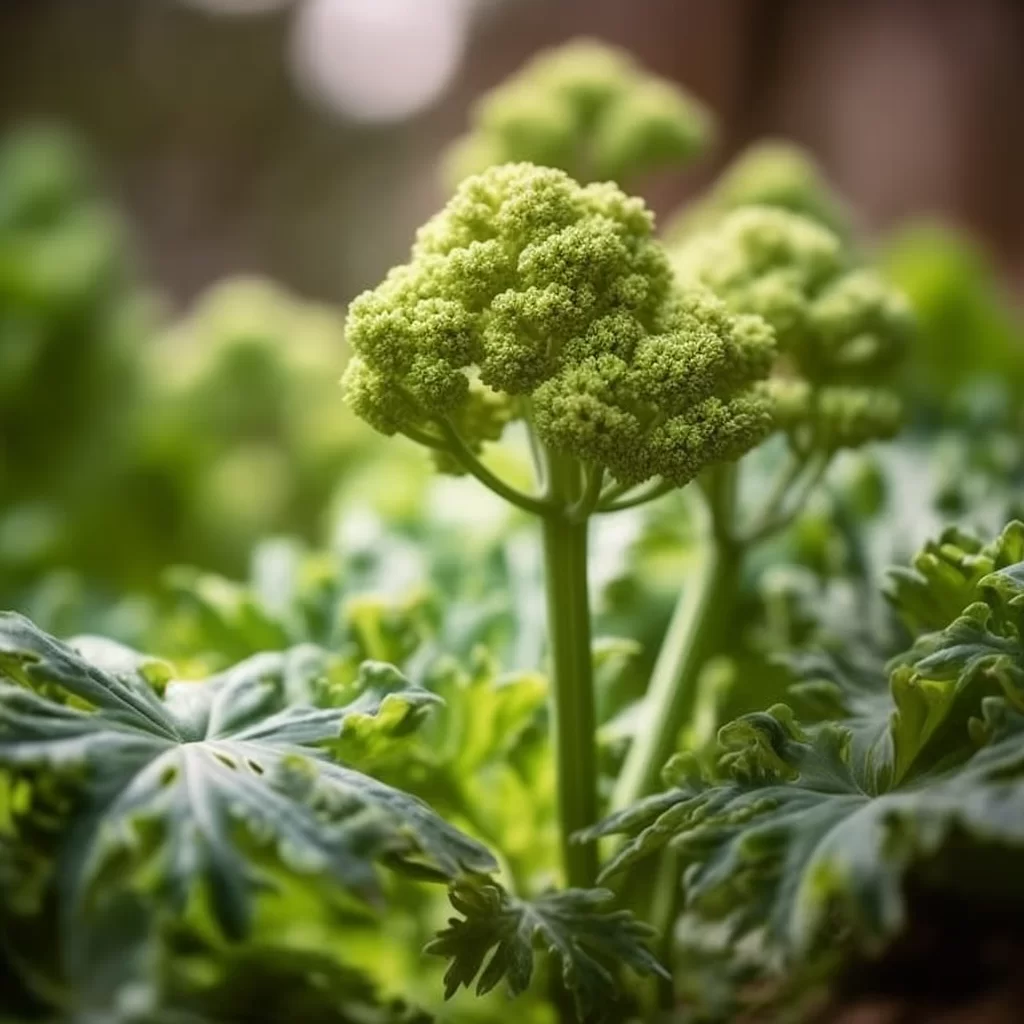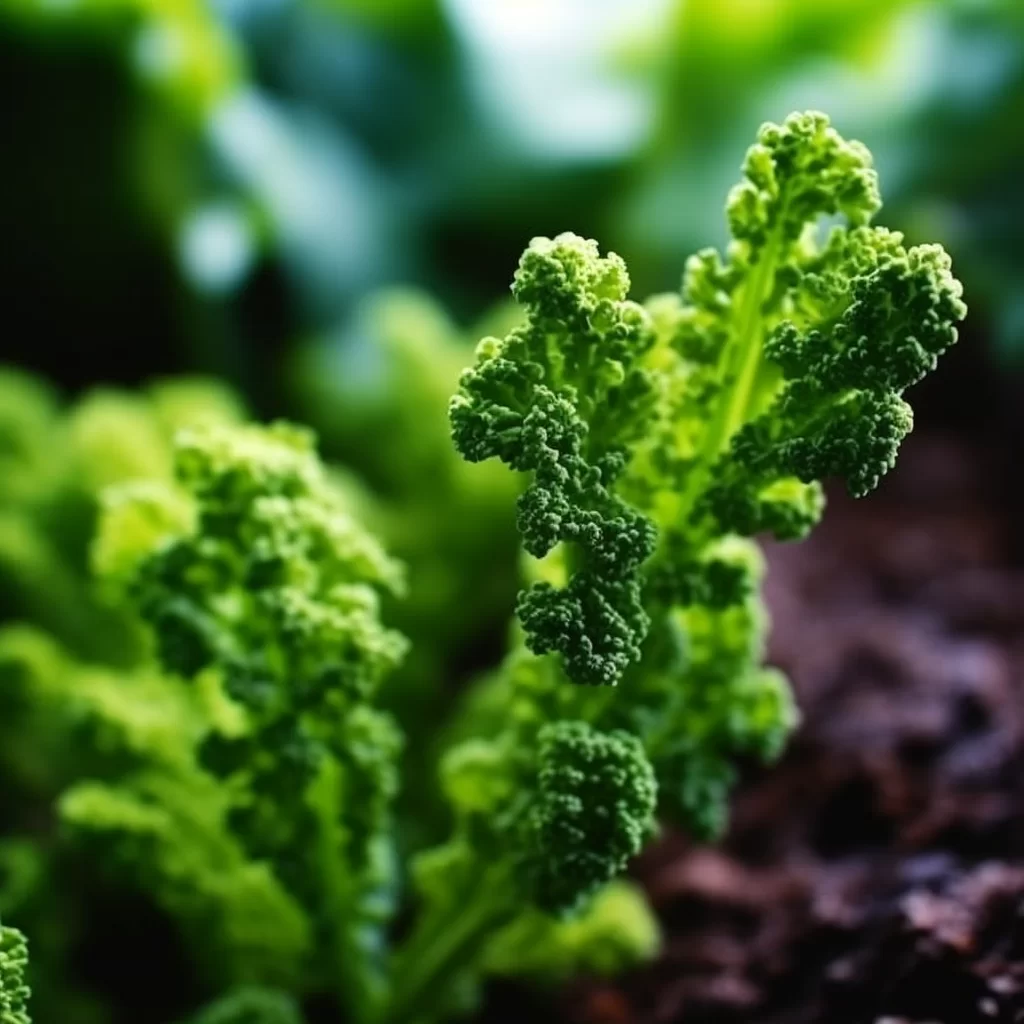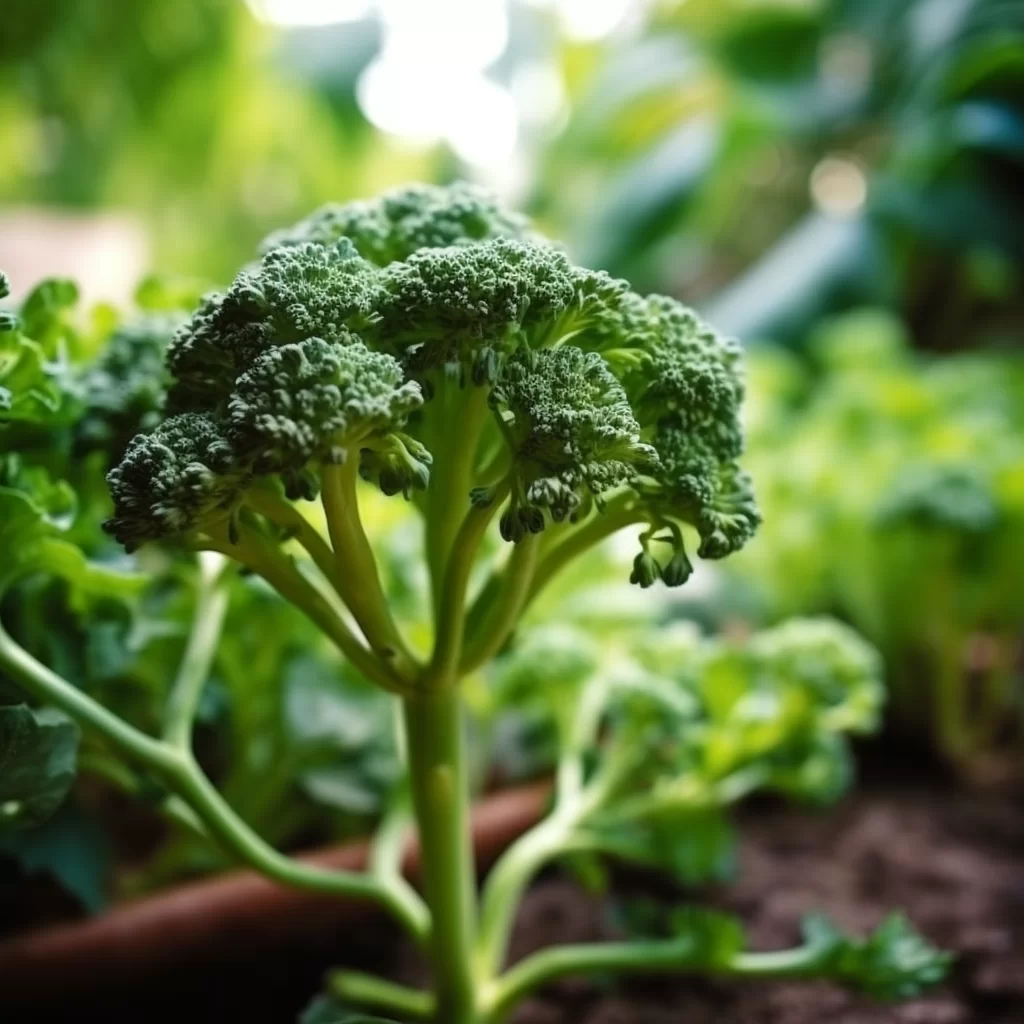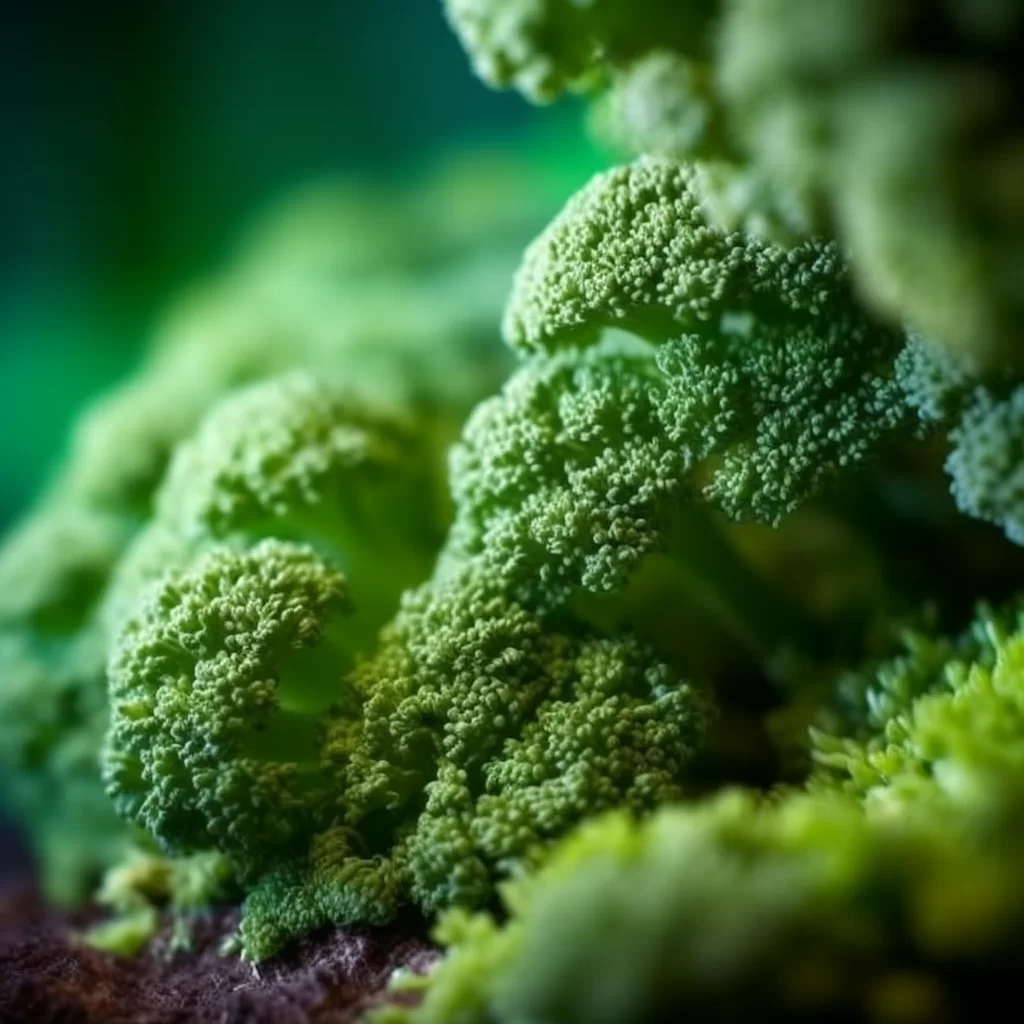Story of Day :
Contents
The Broccoli Plant: A Complete Guide and Care Tips
Broccoli is a highly nutritious vegetable that belongs to the cruciferous family.
This cool-season crop thrives in temperate regions worldwide, making it an accessible and widely cultivated plant.
Its nutritional value is well-known, as it contains high levels of vitamins C and K, folate, fiber, and several minerals like potassium and phosphorus.
However, broccoli’s benefits go beyond its nutrient content; its consumption has been associated with numerous health benefits like reducing inflammation and oxidative stress while promoting heart health.Growing broccoli plants require proper care to produce their famous large heads that are not only delicious but also highly nutritious.
Adequate soil moisture levels are vital when growing broccoli plants because they need consistent water flow for growth.
Additionally, regular fertilization with nitrogen-rich fertilizers ensures the production of healthy foliage that can support large head development.
Furthermore, maintaining optimal temperatures is crucial for broccoli growth as this temperature-sensitive plant responds best to cooler temperatures between 60-65°F (15-18°C).
As such, by offering proper care for their cultivation requirements under favorable conditions consistently can yield a bountiful harvest of this favorite vegetable crop packed with nutrients necessary for healthy living!
Choosing the Right Variety of Broccoli Plant
Before planting broccoli plants in your garden, you should choose the right variety based on your location and climate.
Some popular varieties include:
- Calabrese: This is a traditional variety that produces blue-green heads with tightly packed florets.
- Romanesco: This unique variety produces light green spiraled heads that resemble cauliflower but have a nuttier flavor and crunchier texture.
- Purple Sprouting: As its name suggests, this variety produces purple sprouts instead of one large head.

Caring for Your Broccoli Plants
Soil Preparation
If you want to grow healthy and delicious broccoli, it’s important to make sure that your soil is well-suited for this vegetable.
Your soil should be able to drain water effectively so that the roots of the plant don’t get too wet, which can lead to rot or disease.
Additionally, your soil should contain enough nutrients and organic matter so that the broccoli has plenty of food to fuel its growth.
To achieve these conditions, you might consider adding compost or aged manure into your soil before planting.
These materials can help improve the texture and fertility of your soil, which in turn can support a thriving broccoli crop.By putting in a little extra effort upfront with amending your soil, you’ll be setting yourself up for success when it comes time to harvest your broccoli.
With a well-draining and nutrient-rich environment at their disposal, your plants will be able to reach their full potential and produce high-quality florets packed with flavor and nutrition.
So if you’re looking forward to enjoying some homegrown broccoli in the near future, don’t forget about the critical role that good soil plays in making this happen!
 When it comes to starting a garden, there are two main options: sowing seeds or using transplants.
When it comes to starting a garden, there are two main options: sowing seeds or using transplants.
Sowing seeds is the process of planting small seeds directly into the ground and waiting for them to germinate and grow into full plants.
This method requires patience and careful attention to watering and weeding, but can be more cost-effective than purchasing transplants.
Transplants, on the other hand, are young plants that have been started in a greenhouse or nursery and then transplanted into your garden.
This approach can be easier for beginners because you skip the germination process and start with established plants that may have a better chance of survival.The decision between sowing seeds or using transplants ultimately depends on personal preference, budget, gardening experience level, climate conditions in your area, and time constraints.
While sowing seeds can take longer to establish a garden bed initially, it can often result in stronger plants since they were never uprooted from their original location.
On the other hand, buying transplants allows you to skip some steps of gardening while still getting healthy plant starts that may yield faster results.
Ultimately both methods require care throughout their growth process until they become mature enough to offer bountiful harvests!
Starting your garden can be an exciting yet daunting task.
One of the first decisions you’ll have to make is whether to start seeds indoors or purchase transplants from a nursery.
Starting seeds indoors about six weeks before transplanting them outdoors gives you more control over the growing process and allows for an earlier harvest.
However, if you’re short on time or don’t have the space for indoor gardening, purchasing transplants from nurseries when it’s time to plant may be a more convenient option.If you do decide to start seeds indoors, it’s important to ensure they get enough sunlight (12-16 hours per day) to grow into strong seedlings.
This can be achieved with grow lights or by placing them near a south-facing window that receives ample sunlight throughout the day.
Keeping their soil moist and providing adequate ventilation will also help prevent mold and mildew growth.
With proper care and attention, starting your own seedlings can give you a sense of satisfaction as you see your plants grow from tiny seeds into mature plants ready for transplanting outdoors.
 Sunlight is a crucial element for many living organisms, including plants and animals.
Sunlight is a crucial element for many living organisms, including plants and animals.
For plants, sunlight is essential for photosynthesis, a process where they produce food by converting light energy into chemical energy.
Different plant species require varying amounts of sunlight to thrive.
Some plants can tolerate low light conditions while others require direct exposure to the sun’s rays for several hours each day.
Understanding the specific sunlight requirements of different plant species is important when designing and maintaining gardens or growing crops.For animals, sunlight plays an important role in regulating circadian rhythms and vitamin D production.
Exposure to natural daylight has been linked to improved mental health in humans and reduced stress levels in domesticated animals such as dogs and cats.
However, overexposure to UV radiation can lead to sunburns, skin cancer or other health issues in both humans and animals alike.
Thus it’s vital that individuals are mindful of their own needs when it comes balancing time outdoors with sunscreen use or protective clothing while also being mindful of the needs of their pets who may require additional shade or indoor playtime during peak daylight hours.
If you’re planning on cultivating your own broccoli, it’s essential to ensure that your plants get enough sunlight.
A minimum of six hours of direct sunlight each day is necessary for the broccoli to grow into big, healthy crowns.
Without sufficient sun exposure, the plants won’t develop properly and may produce smaller or less flavorful florets.
Therefore, it’s crucial to choose an area in your garden that receives full sun exposure throughout the day.However, if your garden doesn’t receive adequate sunlight due to shade from trees or buildings, don’t worry! You can still enjoy fresh broccoli by planting them in containers and placing them in a sunny location elsewhere.
This way, you can easily move the pots around as needed to chase the sun and maximize their daily exposure.
By following these tips for growing broccoli successfully, you’ll be rewarded with a delicious harvest of nutritious veggies that you grew yourself!
 Watering is a crucial aspect of plant care that ensures their survival and growth.
Watering is a crucial aspect of plant care that ensures their survival and growth.
It involves adding water to the soil around the roots of plants to replace moisture lost through transpiration and evaporation.
The amount of water needed by plants varies depending on factors such as temperature, humidity, and soil type.
Over-watering or under-watering can lead to stunted growth, wilting, or even death in extreme cases.
Therefore, it is essential to learn how much water your plant needs and when to water it.To determine if your plant needs watering, check the soil moisture level by sticking your finger into the soil about an inch deep.
If it feels dry at this depth, it’s time to add some water.
You can use a watering can or hose with a gentle spray nozzle for this task.
Be sure not to wet the leaves as this may encourage fungal diseases on some plants.
Additionally, you should always avoid over-watering since it suffocates roots by depriving them of oxygen which leads to root rot disease that destroys them ultimately leading up towards bad health for your plant.So remember: Don’t forget about watering! It’s one simple yet crucial part of keeping those green beauties alive and well!
If you’re planning on growing broccoli in your garden, it’s important to know that this vegetable requires regular watering to thrive.
You’ll need to keep the soil consistently moist, which means watering the plants deeply at their base.
The recommended amount of water for broccoli is 1 to 1.5 inches per week – and this includes both rainfall and any additional watering you may do.
With proper moisture levels, your broccoli plants will be able to produce healthy and delicious florets.Consistent moisture is crucial when it comes to growing a bountiful crop of broccoli.
This vegetable needs plenty of water if you want it to grow strong and healthy, so make sure that you are providing enough hydration throughout its growth process.
To ensure that your broccoli receives adequate moisture, be sure to provide a deep watering at the base of each plant every week – aiming for around 1-1.5 inches total (including rainwater).
By following these guidelines and keeping an eye on your plants’ overall health, you’ll soon have a thriving garden full of deliciously fresh broccoli ready for harvest!
Fertilizers and mulches are crucial components in the world of agriculture and gardening.
Fertilizers contain nutrients that help to nourish the soil and plants, promoting healthy growth.
They can be either organic or inorganic, with the former being derived from natural sources such as compost, manure, or bone meal while the latter is made up of synthetic chemicals.
Applying fertilizers helps to ensure that plants receive adequate amounts of nitrogen, phosphorus, and potassium which are essential for their survival.On the other hand, mulches serve as a protective layer on top of soil.
They come in different forms such as leaves, straw or wood chips which gradually decay over time and enrich the soil with nutrients.
Mulching has many benefits including reducing evaporation rates from soil by retaining moisture content leading to less water usage; inhibiting weed growth by suffocating weeds needing sunlight; improving overall plant health by preventing fungal diseases and regulating temperature fluctuations between day/night cycles.
Therefore combining these two practices ensures optimal plant growth both above ground and below while maintaining healthy soils over time without degrading them due to intensive farming techniques used around the world today!
If you want to grow strong and healthy broccoli plants, it’s essential to provide them with proper nutrition.
This can be achieved by using a balanced organic fertilizer every three weeks until the heads start forming.
With regular feeding, the plants will have all the nutrients they need to grow vigorously and produce high-quality broccoli.But that’s not all – mulching your broccoli plants with organic matter is also crucial for their health.
By adding a layer of straw or shredded leaves around your plants, you can help retain moisture in the soil while suppressing weed growth.
This will save you time and effort in weeding while ensuring that your broccoli gets enough water throughout its growing stages for optimal growth and development.
Together, these two simple steps can make a big difference in how well your vegetables thrive!
When it comes to growing broccoli plants, pest control is an essential aspect that cannot be ignored.
Broccoli plants are susceptible to various pests, including aphids, cabbage worms, and flea beetles, which can cause significant damage if left unchecked.
To prevent such damage and ensure healthy plant growth, gardeners should adopt a range of pest control techniques.One approach is to use natural predators that feed on the pests.
For instance, lacewings and ladybugs can help control aphid populations effectively.
Alternatively, physical barriers such as netting or row covers can be used to keep out insects like cabbage worms and flea beetles from attacking the plants.
However, if these measures fail or are insufficient in controlling the pests’ population levels entirely, using organic pesticides may be necessary.
These eco-friendly products contain naturally occurring substances that repel or kill pests without harming beneficial insects or contaminating the soil with harmful chemicals.
In conclusion, by adopting some of these preventive measures against brocoli’s common pests will help gardeners grow healthy and flourishing broccoli plants without compromising environmental health concerns.
Broccoli plants are often plagued by aphids, which are minuscule insects that feed on the sap of young leaves and stems.
This causes noticeable damage in the form of distorted foliage that turns yellow over time.
Luckily, there is a simple solution to control these pesky creatures – a mixture of dish soap and water can do the trick! By applying this solution, you can dry out their bodies and render them powerless against your broccoli plants.Using dish soap as a pest control method might seem unconventional, but it is surprisingly effective.
The detergent in the soap breaks down the wax coating on aphids’ bodies, causing them to dehydrate and die off.
Additionally, spraying this solution onto your broccoli plants will help prevent future infestations by repelling other pests from attacking them.
It’s crucial to act fast at the first sign of aphid damage to ensure healthy growth for your broccoli crop without any unnecessary setbacks due to these tiny invaders!
Harvest Your Broccoli Plant Properly
- You can harvest your broccoli once the heads are firm, tight, dark green or blue-green color with no yellow flowers blooming yet.
- Cut off each head at an angle leaving 6 inches of stem attached below it so new side-shoots will form along this cut stem giving you more broccoli heads over time!
The Bottom Line
If you follow all these guidelines carefully when cultivating your broccoli plant(s), You are likely going to get healthy yield from it.
Enjoy growing this delicious vegetable that’s both nutritious and versatile!